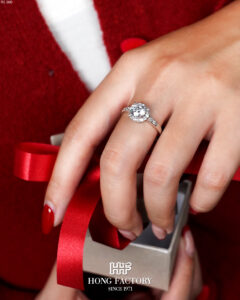Sterling silver jewelry is widely appreciated for its beauty, affordability, and timeless appeal. However, some wearers report experiencing allergic reactions, which raises questions about whether sterling silver can cause skin irritation. This article explores the facts and myths surrounding sterling silver jewelry allergies and offers practical advice for sensitive skin. Is sterling silver real

What Is Sterling Silver Made Of?
Sterling silver is an alloy composed of 92.5% pure silver and 7.5% other metals, usually copper. This combination improves durability while maintaining the aesthetic appeal of silver. However, it’s the presence of other metals—not silver itself—that can cause allergic reactions in some individuals.
Fact: Allergies Are Usually Caused by Other Metals
Pure silver is hypoallergenic, meaning it’s unlikely to cause allergic reactions. The most common culprit in allergic reactions is nickel, a metal sometimes used in very low-quality silver or mixed into cheaper alloys. High-quality sterling silver typically avoids nickel, using copper instead, which is far less reactive.
Myth: All Sterling Silver Causes Allergies
Not all sterling silver will trigger an allergic response. Many people with sensitive skin wear 925 sterling silver without any problems. Issues arise mainly from:
- Poor quality alloys that include nickel
- Skin sensitivity to copper (rare but possible)
- Lack of proper jewelry care, leading to tarnish and irritation

How to Tell If You’re Allergic to Sterling Silver
Symptoms of a mild allergic reaction include:
- Redness or itching around the contact area
- Dry or flaky patches on the skin
- Discomfort or rash after prolonged wear
If these symptoms occur, stop wearing the item and consult a dermatologist.
How to Avoid Allergic Reactions with Sterling Silver Jewelry
- Buy High-Quality 925 Sterling Silver
Look for the “925” hallmark and buy from trusted sellers who guarantee their pieces are nickel-free. - Opt for Rhodium-Plated Silver
Rhodium plating adds a protective layer that minimizes direct skin contact with the alloy. - Keep Jewelry Clean and Dry
Moisture and dirt can aggravate skin issues. Wipe your silver jewelry after each use. - Avoid Wearing Jewelry During Sweaty Activities
Remove silver pieces when exercising, swimming, or using skincare products. - Test Small Areas First
If unsure, wear a new piece for a few hours before prolonged use.
Sterling silver remains one of the most popular choices for jewelry lovers, including those with sensitive skin. While allergies to pure silver are extremely rare, reactions can happen due to the presence of other metals in the alloy. By choosing high-quality pieces and following proper care routines, you can enjoy the beauty of sterling silver without discomfort. Understanding the facts helps you separate the myths from reality—and wear your silver jewelry with confidence.
